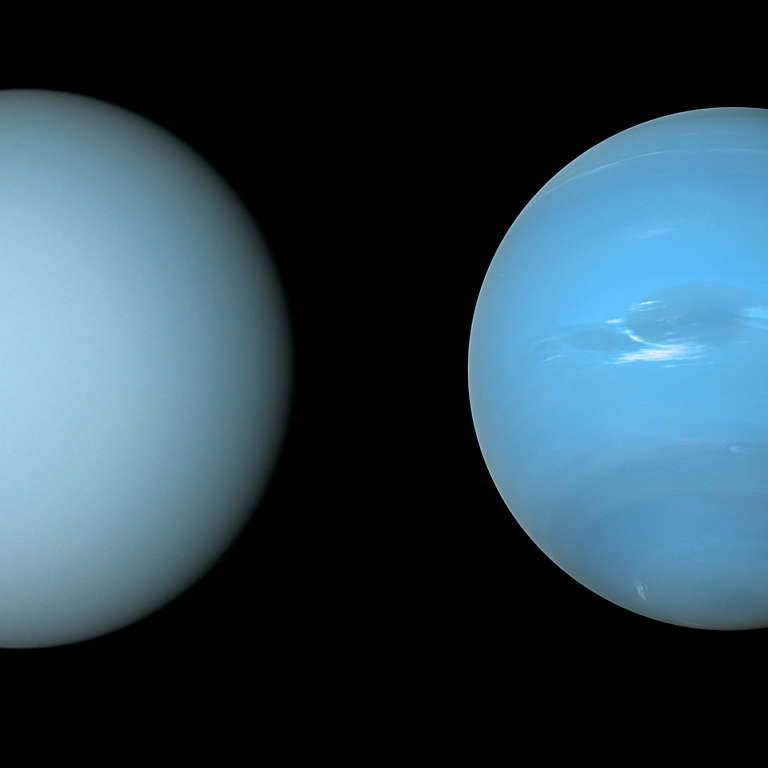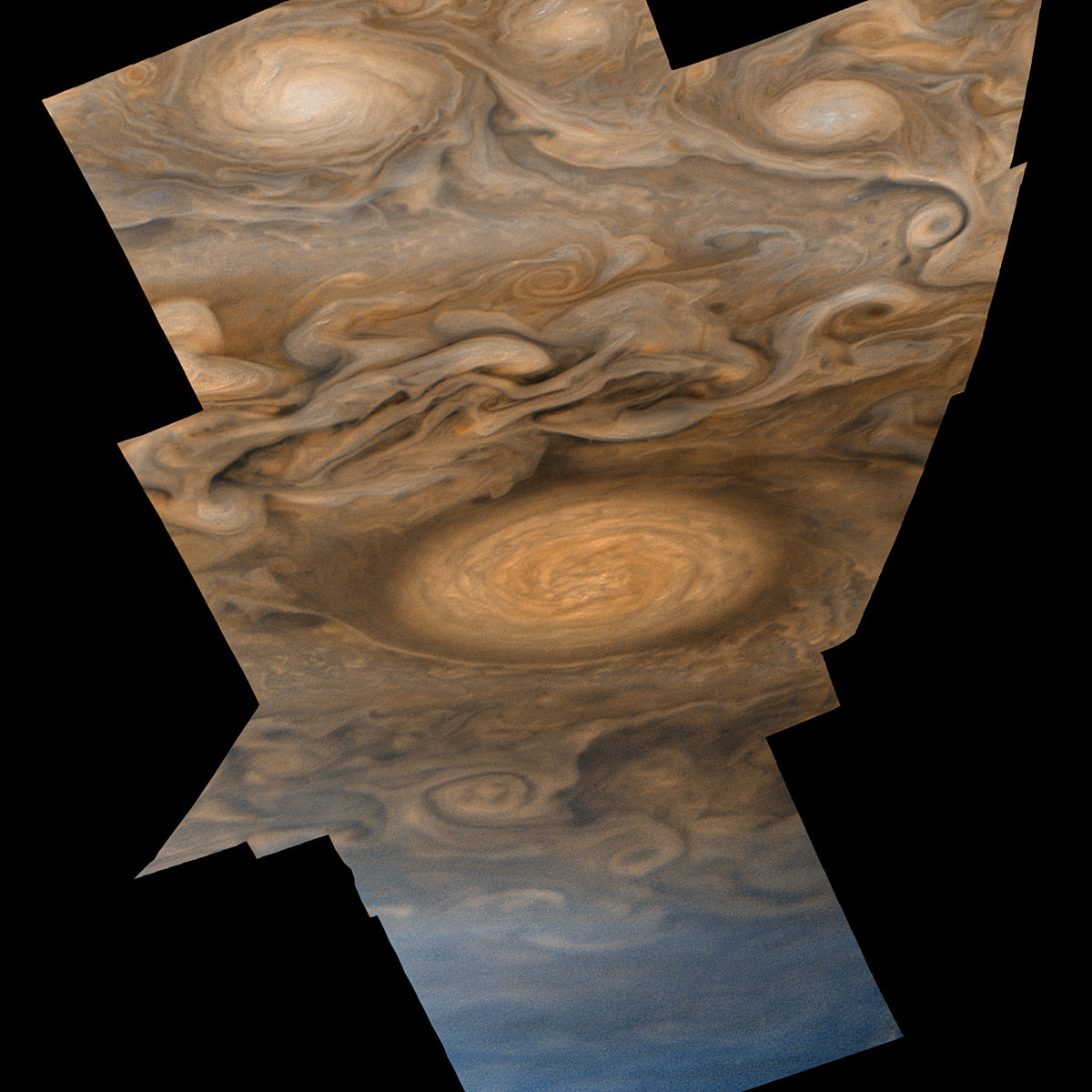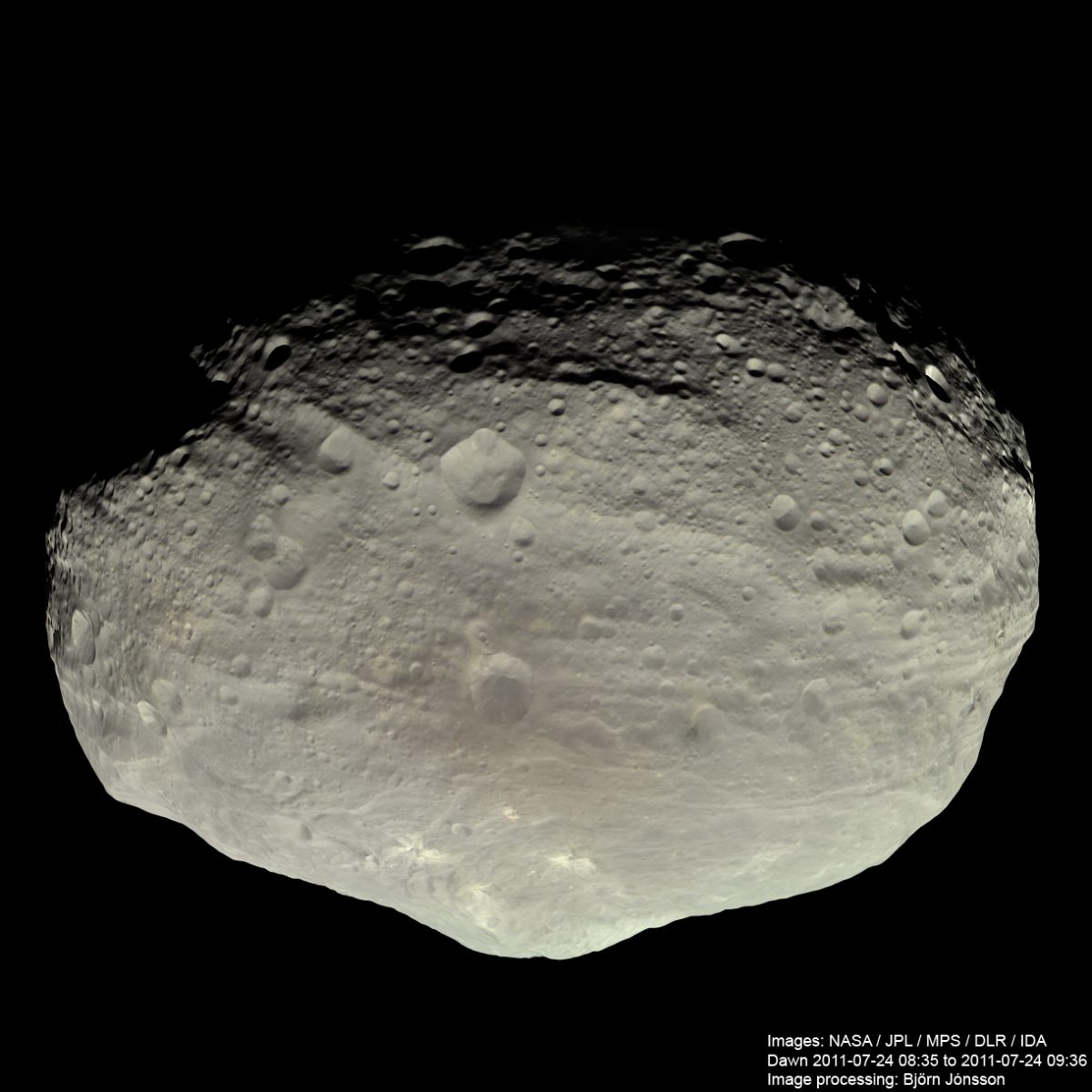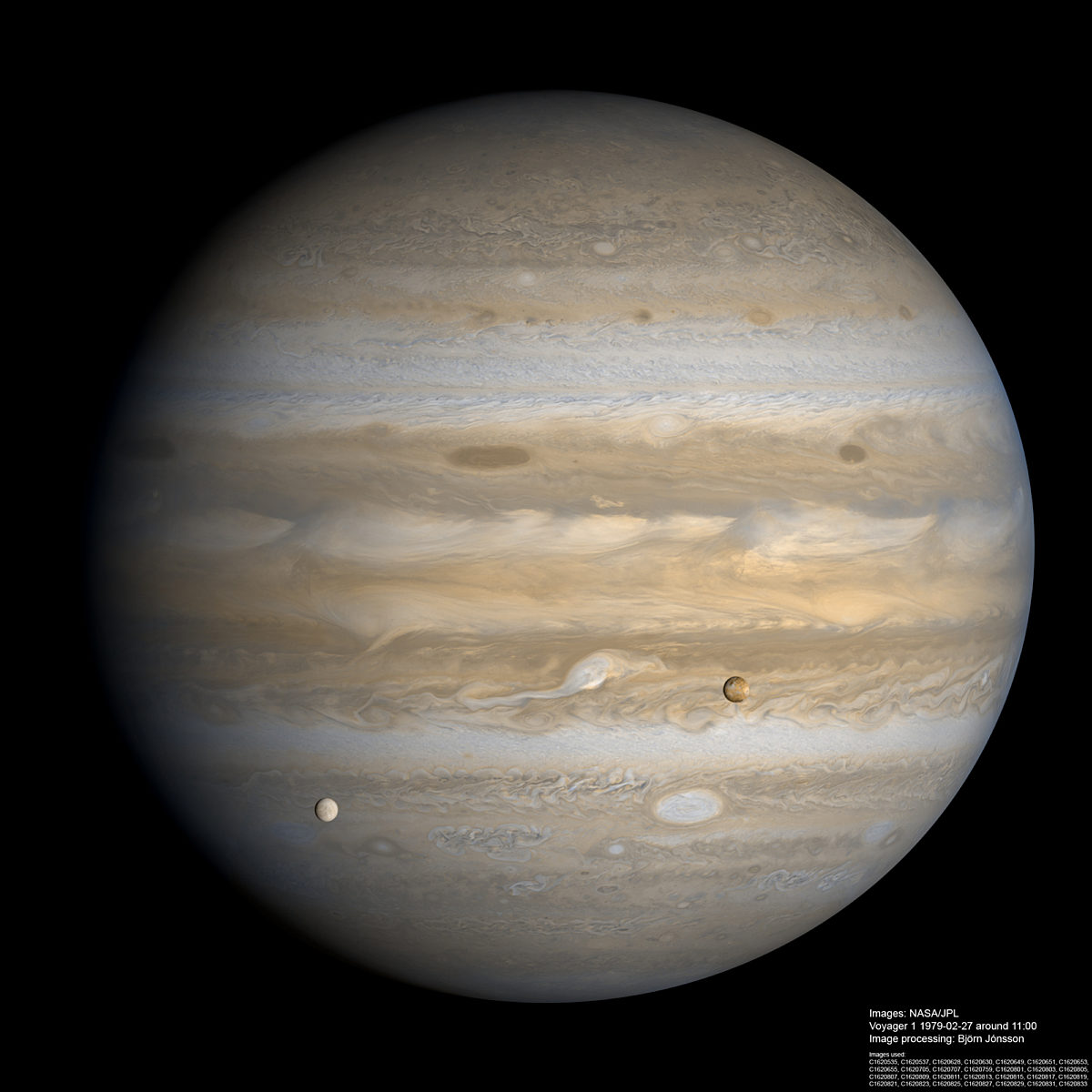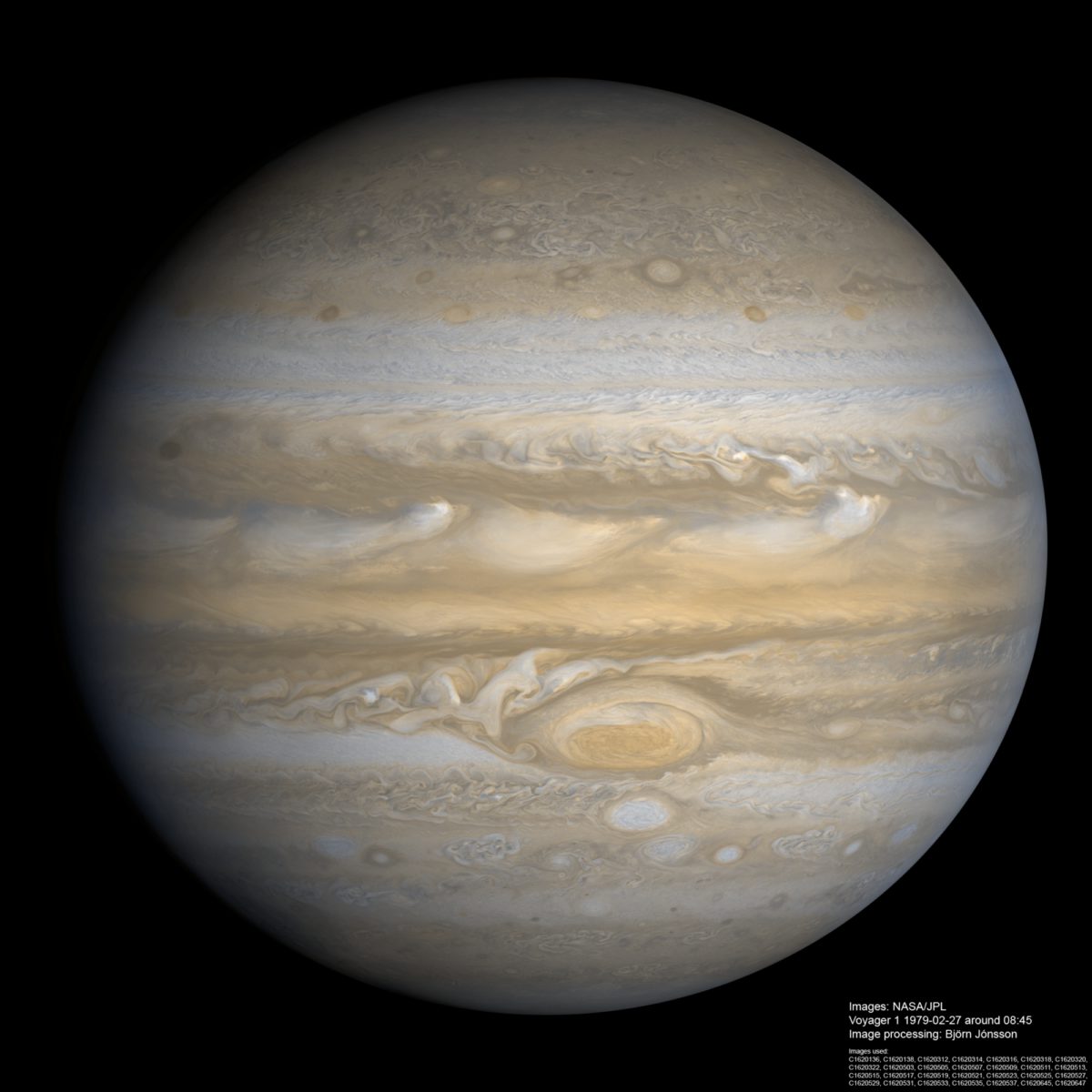All
All
Stories, updates, insights, and original analysis from The Planetary Society.
The subtle color difference between Uranus and Neptune
The color of Uranus and Neptune is similar, but not identical. Uranus appears greener and Neptune bluer.
Juno meets Cassini: A new merged global map of Jupiter
The Juno spacecraft that is currently orbiting Jupiter has obtained the first good images of Jupiter's polar regions. I am presenting here a combined global map of Jupiter, made from a Cassini map I made for the equatorial and temperate regions and polar maps made from the Juno JunoCam and JIRAM polar images.
Diving into Juno JIRAM data archives
The Jovian Infrared Auroral Mapper (JIRAM) instrument can obtain images in two infrared bands. JIRAM can see the nightside of Jupiter (including the winter pole) and takes spectacular animations.
Voyager 40th anniversary: Revisiting the Voyagers' planetary views
Björn Jónsson argues that even now, 40 years after Voyager 1 and 2 were launched, a lot of the data they returned is still of high interest.
New treasures from Juno: Jupiter dazzles during fourth close approach
Image processor Björn Jónsson shares some of his latest stunning images of Jupiter, created using data from NASA's Juno spacecraft.
A deep dive into the highest-resolution Voyager Jupiter data
A few weeks before the first Juno high resolution imaging, I decided to take a look at Voyager color images at various resolutions, with particular attention to high-resolution mosaics.
Jupiter's Great Red Spot
On the 20th anniversary of Galileo's orbit insertion around Jupiter, amateur image processor Björn Jónsson shares some of the mission's first images of Jupiter's iconic massive storm.
Mapping Europa
Several global maps have been made of Europa, but amateur image processor Björn Jónsson felt they could be improved—so he decided to make a new one.
Revisiting Uranus with Voyager 2
Amateur image processor Björn Jónsson brings us some new views of Uranus from reprocessed Voyager 2 data.
Producing global views of Vesta from archival data
Björn Jónsson produces beautiful color and 3D global mosaics of Vesta from Dawn's archival data.
Voyager 1 revisited: Io and Europa transiting Jupiter
What is the highest resolution global Jupiter mosaic that includes a satellite transit that can be assembled from Voyager images? Satellite transits are especially beautiful when the resolution is high enough for some details to be visible on the satellites so I decided to check this. And I was remarkably lucky.
Pretty picture: Landsat view of southern Greenland
This is a very large (19000 pixels square) mosaic of the fjords and glaciers of southern Greenland. I had been interested for a long time in experimenting with the processing of Earth satellite imagery just to get a comparison to the other planets.
A Voyager 1 anniversary mosaic
Back in 1979 the twin Voyager 1 and 2 spacecraft flew by Jupiter. Some of their images were processed into color images and mosaics that have appeared countless times in books, magazines, on TV and on the Internet. Many of these images and mosaics are spectacular but they were processed more than 30 years ago using computers that are extremely primitive by today's standards. It's possible to get better results by processing the original, raw images from the Voyagers using modern computers and software.
Possibly the best view of the Great Red Spot ever
This is a new, big mosaic of Voyager 1 images, this time showing the Great Red Spot at high resolution.


 Explore Worlds
Explore Worlds Find Life
Find Life Defend Earth
Defend Earth


 Sun
Sun Mercury
Mercury Venus
Venus Earth
Earth Mars
Mars Jupiter
Jupiter Saturn
Saturn Uranus
Uranus Neptune
Neptune Small Bodies
Small Bodies